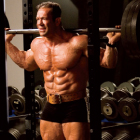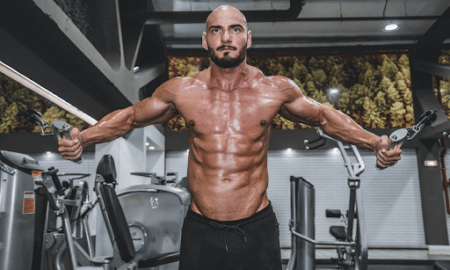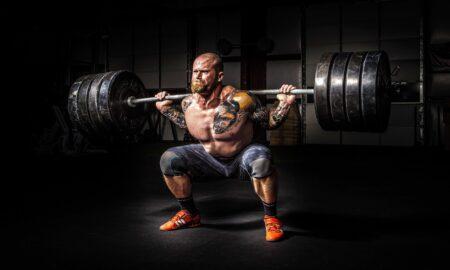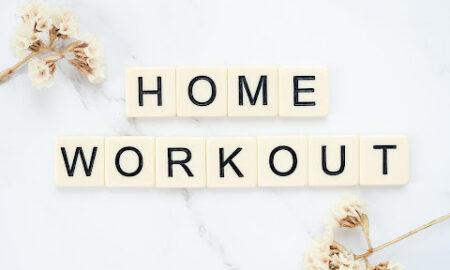 The other day I got a Facebook message from a young man in India, asking me how to improve his upper chest. I clicked to his page to see what he looked like, and as is the case with many of the would-be bodybuilders who contact me from India and Pakistan, he appeared to be about 120 to 140 pounds at most.
The other day I got a Facebook message from a young man in India, asking me how to improve his upper chest. I clicked to his page to see what he looked like, and as is the case with many of the would-be bodybuilders who contact me from India and Pakistan, he appeared to be about 120 to 140 pounds at most.
In other words, he had hardly any muscle in the first place, yet he was concerned about one specific area he perceived as lagging.
I don’t mean to single him out-—or people from the great nation of India—because that way of thinking is quite common across all countries and cultures. The expression “You can’t see the forest for the trees” comes to mind.
When you’re building a physique, the mantra to keep repeating is, “Take care of the big things, and the little things will take care of themselves.” Beginners need a solid foundation of overall mass. That’s the reason that routines for beginners are all compound movements. A perfect workout for a first-year trainee would be a concise list of exercises: bench presses, squats, deadlifts, military presses, chins, dips, barbell rows.
The first question most beginners would ask is, “Why aren’t there any arm exercises?” It makes little sense at this stage to do any direct arm work, even though most beginners only want to train chest and arms. If you can work your way up to using decent weights on bench presses, military presses and dips, your triceps are going to grow. Similarly, getting stronger on deadlifts, chins and barbell rows will give your biceps plenty of work.
What about upper chest? Until you have some chest mass in the first place, don’t worry about your upper chest in particular. No hamstring work? Between squats and deadlifts, your hams will be fine.
If you still need a lot of mass, your goal should be to add as much size as possible. You do that by putting your time and energy into the big, basic compound movements that deliver the greatest bang for your buck. That’s the exact opposite of what many beginners do, which is to copy the routines of pro bodybuilders from the magazines. That’s a horrible idea—and I say that as someone who has made most of my income over the past 15 years from writing those articles on pro training.
Why shouldn’t beginners take their blueprints from what the pros do? The way the pros train now is not what they did in their early years, when they were building their size in the first place. Back then most of them spent the majority of their time and energy on the basic free-weight movements. Now, many years later, they have all the size they want or need—their main concern is bringing up certain areas or simply “refining” and “maturing” what they have.
To that end they do plenty of isolation exercises, like cable crossovers, leg extensions and concentration curls. Many of them have long abandoned the basics, either because of injury or the fear of injury—or because they are simply too lazy to do the toughest exercises now that they really don’t need to. Again, the point is that they’ve finished building muscle. Beginners have no business wasting time and energy on a bunch of isolation movements, cables and machines.
Let’s look at an example involving two individuals who, for the sake of argument, have the exact same genetics, so we can rule that out as a factor in their results.
Beginner A starts off on a pro bodybuilder’s routine. He does a ton of exercises for each bodypart, hitting every possible angle. He does few if any of the compound exercises listed above. In a year he goes from 150 to 157 pounds. Rather than consider that his workout might be holding him back, he looks into different supplements or maybe even thinks about a cycle of steroids. I mean, he’s training so hard and has so little to show for it! He’s particularly concerned that his arms have only grown a half inch even though he blasts them with 20 to 30 sets every week.
Beginner B trains every other day, warming up on each of the basic exercises and then hitting two or three good work sets of eight to 10 reps. After a year his numbers on deads, squats, bench presses, rows, etc., are way up, and his weight has gone from 150 pounds at the start to 182. His chest, back, shoulders and legs have beefed up considerably, and he hardly looks like the same person. And what do you know—he hasn’t done a set of curls or skull crushers yet, and his arms are up two full inches. He’s drug-free and has no plans to use anything for the time being; he’s doing just fine without gear. At this point he can begin splitting up the bodyparts and adding more exercises—for example, for arms, upper chest, hamstrings and calves—as he has built a very solid foundation of size and strength.
As you can see, focusing on the big picture, meaning the overall physique and the movements that will give you the greatest overall results, is the way to go. Please don’t waste your precious time and energy on the little things, at least until the time comes that it makes sense. If you are in dire need of size, do yourself a huge favor and get back to basics. They have worked for millions of people all around the world over many decades, and they will work for you too. —Ron Harris
Editor’s note: Ron Harris is the author of Real Bodybuilding—Muscle Truth From 25 Years i1n the Trenches, available at www.RonHarrisMuscle.com.




















You must be logged in to post a comment Login